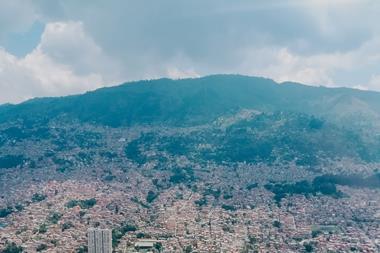The least resilient cities, according to the study, carried out in partnership with Economist Impact, were New Delhi, Jakarta, Cairo, Dhaka, and, lastly, Lagos.
Cities across the world lack the infrastructure, societal safety nets and robust environmental policies needed to combat the worsening impacts of climate change, according to a major new report.

Tokio Marine Group and The Economist Impact launched a resilience study into the most prominent risks faced by 25 global cities.
The top five performing cities were London, Paris, New York, Los Angeles and Singapore. At the bottom of the index were New Delhi, Jakarta, Cairo, Dhaka, and, lastly, Lagos.
Behind the data
The Resilient Cities Index 2023 was devised by Economist Impact and sponsored by Tokio Marine.
It scores cities’ ability to evade, withstand, and recover from shocks and long-term stresses.
Urban centres were graded for bounce-back capacity, critical infrastructure, environmental, socio-institutional and economic factors.
European cities led on the socio-institutional metric, but leaders like London and Paris were somewhat hamstrung by their ageing infrastructure.
Emerging economy cities were deemed the most vulnerable, the study revealed, with heat stress having a huge impact on critical infrastructure, as evidenced by the recent Pakistani floods and droughts.
Developed cities like Dubai, Hong Kong and New York are exposed to climate shocks, and some lack comprehensive plans to integrate the vulnerable.
Understanding the threats
The Resilient Cities Index iidentifies the gaps and challenges that cities face, giving insights into the opportunities and the way forward. The research is intended to empower businesses, policymakers, city planners and communities to formulate targeted strategies that help ensure that cities thrive amid challenges
It is often assumed that wealthier cities are relatively safer from shocks or crises, but the index proves otherwise.
Jonathan Birdwell, global head of policy and insights, Economist Impact, said: “One thing the index highlights is that stark fact that the cities in emerging markets facing the biggest risks, don’t have the adequate policies and finances to be able to meet those risks.
“Last year, Asia experienced 81 climate and water related events that, unfortunately led to the loss of life of 5,000 people and over $36bn in damage,”
He emphasised that 1.8 billion people live in flood risk areas and that Asia is particularly vulnerable, with its cities’ temperatures warming faster than the global average.
“Last year, Asia experienced 81 climate and water related events, including droughts and floods, that, unfortunately led to the loss of life of 5,000 people, affected 50 million people, and led to over $36bn in damage,” he added.
Rapid urbanisation is making this threat more urgent, the study emphasised.
“The context for this work is global uncertainty is really at an all-time high. The impact is even greater in densely-populated areas…We see increasing urbanisation…two thirds of the world’s population will be living in cities and 2050,” Birdwell added.
What does it mean for businesses?
The corporate picture is mixed, warned Alice Charles, former head of cities and urban development at the World Economic Forum, with some firms taking a shallow or cynical approach to Environment, Social and Governance (ESG) scores.
“That’s certainly not responsible leadership. I think that a lot of companies are very focused on writing ESG reports, rather than thinking about what they can do,” she said.
“There are leaders that are certainly responsible. And then we find some that are not responsible, and they’re focused on offloading their assets, and we’re finding those assets are ending up in the hands of those who have the least ability to act,” Charles added.
Efforts to provide early warnings of shocks are vital, Birdwell noted, and more investment will boost resilience by giving cities access to the frontier horizon technologies such as drones and AI that can help to supercharge the effectiveness of early warning systems.
“I think that a lot of companies are very focused on writing ESG reports, rather than thinking about what they can do”
“Resilience requires long-term thinking and preparing for future risks” he said. Too often, it’s all about the near-term-ism… that sort of thinking leads businesses and individuals to not explore options like insurance,” said Birdwell.
“It’s about city officials providing the right incentives for businesses and individuals to think more long term and prepare for future risks. This could look, for example, at incentivising the retrofitting of legacy buildings, or providing rewards for the use of renewable materials,” he said.
He also emphasised the need to develop better data to track progress of resilience interventions, measure gaps and identify priorities, make data-driven decisions, and increase trust and accountability.
He concluded: “Finally, there is a need to support innovation to map risks and drive solutions. Challenges like decarbonisation are going to require innovation.. A lot of cities actually [perform] quite poorly in terms of ecosystem for startups, so there’ work to do, continuing to encourage that.”
This article includes reporting from our sister publication Global Reinsurance.




















No comments yet